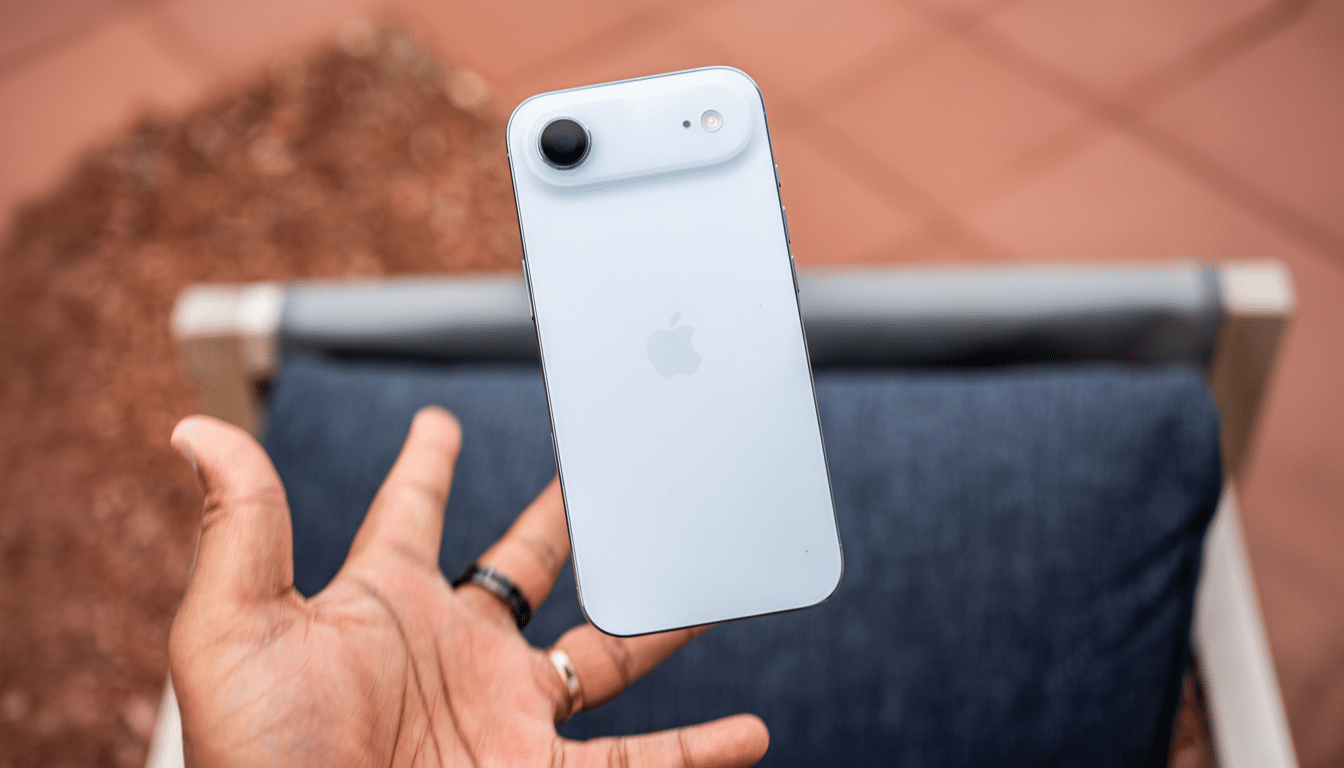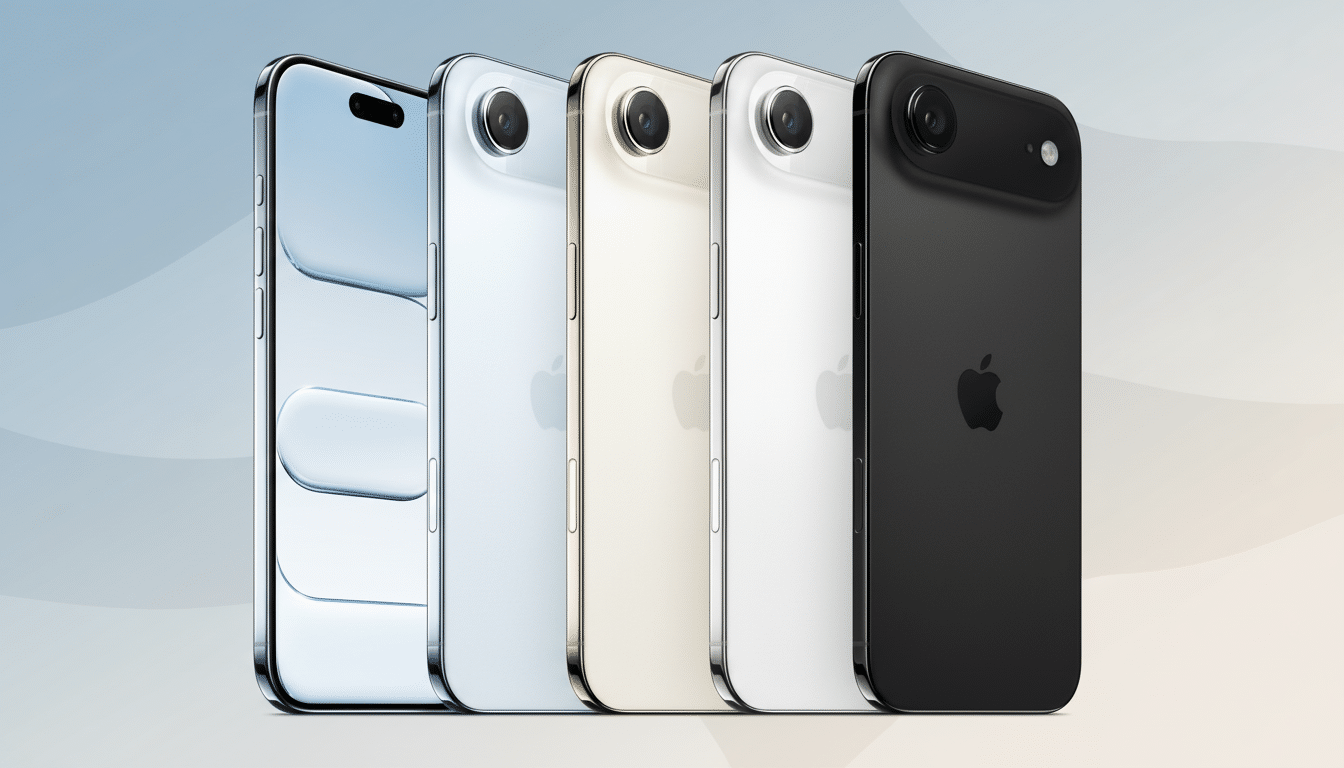Apple’s latest keynote was all about thin, efficient hardware and practical intelligence, not splashy AI demos. The company announced the iPhone 17 line, a dramatically sleek new iPhone Air, Apple Watch Series 11 and Ultra 3, as well as AirPods Pro 3 — all taking existing product lines in new directions with thoughtful, and often overdue, improvements.
Prices stay the same for most regions but configurations change: base storage climbs to 256GB on all iPhone 17 models, while big spenders complain for Pro Max asound 2TB. The day’s story, though, was a razor-thin iPhone that stole the show — and the day — and set the tone for Apple’s focus this cycle.

iPhone Air wows the audience
The iPhone Air got an audible gasp due to a profile of 5.6mm, a lightweight structure, and a 6.5-inch always-on display. Apple slapped a titanium frame and ceramic-coated back on for sturdiness, then jammed in the A19 Pro chip for the kind of headroom that smacks more of compact Mac than middlin’ phone. The phone-balanced-on-a-fingertip stage demo spoke the quiet part out loud: design leads here.
There are trade-offs by design. The Air becomes eSIM-only worldwide, making room for a bigger battery and cutting complexity, though jet-setters will need to check if its supported by local carriers. Connectivity gets upgraded with Apple’s N1 wireless chip (WiFi 7, Bluetooth 6, Thread) and future-proofed with a more efficient C1X modem. Where the camera is concerned, Apple does something quite clever: it goes with just a single 48MP “fusion” sensor — one that fakes multiple focal lengths — so it can keep the chassis impossibly slender while still serving creators who want to travel light.
iPhone 17 and Pro: faster screens, cooler cores
The standard iPhone 17 finally receives a 120Hz ProMotion display after years of waiting. It runs on the new A19 chip with a 16‑core Neural Engine and 5‑core GPU, enhancing gaming smoothness and on‑device AI tasks. The main camera grows to 48MP (binned to 24MP by default) and a wider-front camera with auto-framing means selfie video and vlogging is more natural without endless hand gymnastics.
Pro and Pro Max focus on sustained performance and a better camera. With its A19 Pro and vapor-chamber cooling underneath, the phone is designed to keep clocks high under load, and an anti-reflective front layer enhances outdoor visibility. All three of the rear cameras are 48MP; Apple claims 4x optical zoom with up to 8x “optical‑quality” range. (The particularly interesting part: Apple shot the release video on iPhone 17 Pro, highlighting the ProRes RAW and Genlock add-ons.) The Pro switches to a lighter aluminum build and largest iPhone battery yet, and the lineup’s new camera visor design gives you a signal that this is a new age of iPhone industrial design.
Apple Watch Series 11, Ultra 3 and SE3
Apple Watch Series 11 its sights on health and well-being. The case is slimmer and has a ceramic coating that’s more resistant to scratches, and it adds 5G for faster connections. Freshness comes both in the form of new faces (Flow, which is based on the fluid-glass aesthetic across iOS, and the time-centric Exactograph) and full reworkings of classic designs. Sleep Scores are coming for added nightly insight, and Apple says hypertension detection is in the works pending regulatory clearance. The original bands from Nike and Hermès are making a comeback.
Endurance users, meanwhile, get an upgraded display component in the Apple Watch Ultra 3, which features a brighter, wide‑angle OLED with narrower bezels, as well as satellite support for emergency messages and Find My syncing, to go alongside 5G connectivity, while battery life has been cranked up an impressive 42 hours (making it the longest-rated Watch to date) to accommodate multi-day adventures.

That surprise value play is Apple Watch SE 3. It picks up the S10 chip, finally gets an always‑on display, and adds fast charging: Apple claims around 15 minutes for about eight hours of typical use, with its usual 18‑hour rating unchanged. It’s a compelling option for first-time customers of a smartwatch.
AirPods Pro 3 up that audio ante
The AirPods Pro 3 switch to a multi‑port acoustic architecture for cleaner airflow and fuller sound, and active noise cancellation is rated at double that of the previous generation. Battery life now goes up to a maximum of eight hours with ANC on (10 with Transparency) and five sizes of ear tips improve fit. Live Translation, powered by on‑device mode, can even translate between languages in bilingual conversations using AirPods (translation is processed on device, audio is ducked).
Apple builds on the earbuds by including heart‑rate sensing, further increasing its health footprint. The earbuds do not come with a charging cable — most people will already have their USB‑C cables on hand — but owners of early AirPods may need to buy one. A rumored ear‑temperature sensor didn’t make it in, which might be a knock to health‑minded people.
Early Reactions, Deals, and a Reality Check on AI
Among the things unveiled Thursday in a darkened Cupertino theater, the iPhone Air drew the biggest response. The thiness is a topic starter, and apple’s argument for a single high‑quality sensor went down better in person than on the spec sheet. The shift to eSIM‑only on Air is also a telltale sign of where the industry is headed; the GSMA has been tallying consistent global growth of eSIM support, but frequent travelers will want to double‑check regional compatibility.
Carrier incentives quickly materialized, including trade‑in credits that would make an iPhone 17 Pro free to customer on premium plans. As with anything, the fine print is crucial — installment terms, plan locks and eligibility caveats can wipe out headline savings. For many purchasers, the easy decision will be the new 256GB base storage and near‑flat pricing year over year.
On AI, expectations were intentionally dampened. In the run-up to the keynote, Bloomberg’s Mark Gurman had tipped that we would not see big generative features in this one, with a fuller overhaul of the Siri system to come later. In the meantime, the company’s iOS 26 “Apple Intelligence” features shown off at WWDC offer significant improvements across new phones. Counterpoint Research still attributes Apple’s momentum in wearables to a health-first strategy, and this event played right into that.

